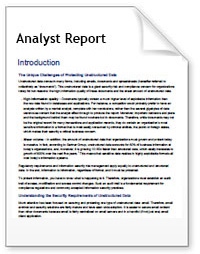Privileged Access Management (PAM) is a critical component of any organization's cybersecurity strategy. Privileged accounts provide access to the most sensitive data and systems within an organization. As such, it's essential to manage them carefully to prevent unauthorized access, data breaches and cyberattacks.
Here are some best practices for implementing PAM in your organization to ensure that your privileged accounts are secure and protected.
Identify your privileged accounts
The first step in implementing PAM is to identify all the privileged accounts within your organization. This includes not only user accounts but also service accounts, application accounts and administrative accounts.
Assign privileges based on roles
Once you've identified your privileged accounts, the next step is to assign privileges based on roles. Each role should have a specific set of privileges that are necessary for the job. For example, a system administrator will require more privileges than a regular user.
Implement the principle of least privilege
The principle of least privilege is a security concept that states that users should only be given the minimum amount of access necessary to perform their job. This principle should be applied to all users, including privileged users.
Use Multi-Factor Authentication
Multi-Factor Authentication (MFA) is a security measure that requires users to provide multiple forms of authentication to access an account. This helps prevent unauthorized access, even if a password is compromised.
Use strong passwords
Strong passwords are essential for protecting privileged accounts. Passwords should be complex, unique and changed regularly.
Monitor privileged account activity
Monitoring privileged account activity is essential for detecting any suspicious activity. This includes logging all privileged account access and regularly reviewing logs for any anomalies.
Implement Just-in-Time Privilege
Just-in-Time Privilege is a security concept that provides users with temporary access to a resource only when they need it. This helps to prevent unauthorized access and limits the time window during which a privileged account can be compromised.
Implement privileged session recording
Privileged session recording is a critical component of PAM. It allows you to record all privileged sessions, including keystrokes and mouse movements, for auditing and forensic purposes.
Regularly review and audit access
Regularly reviewing and auditing access to privileged accounts is essential for identifying any potential security risks. This includes reviewing access privileges, permissions and any changes to privileged account configurations.
Educate Your Employees
Finally, it's essential to educate your employees on the importance of PAM and how to use it effectively. This includes training them on the risks associated with privileged accounts and how to properly manage them.
Implementing PAM is critical for protecting your organization's most sensitive data and systems. By following these best practices, you can ensure that your privileged accounts are secure and protected from cyberattacks. Remember to continuously monitor and audit your PAM program to ensure that it remains effective over time.





